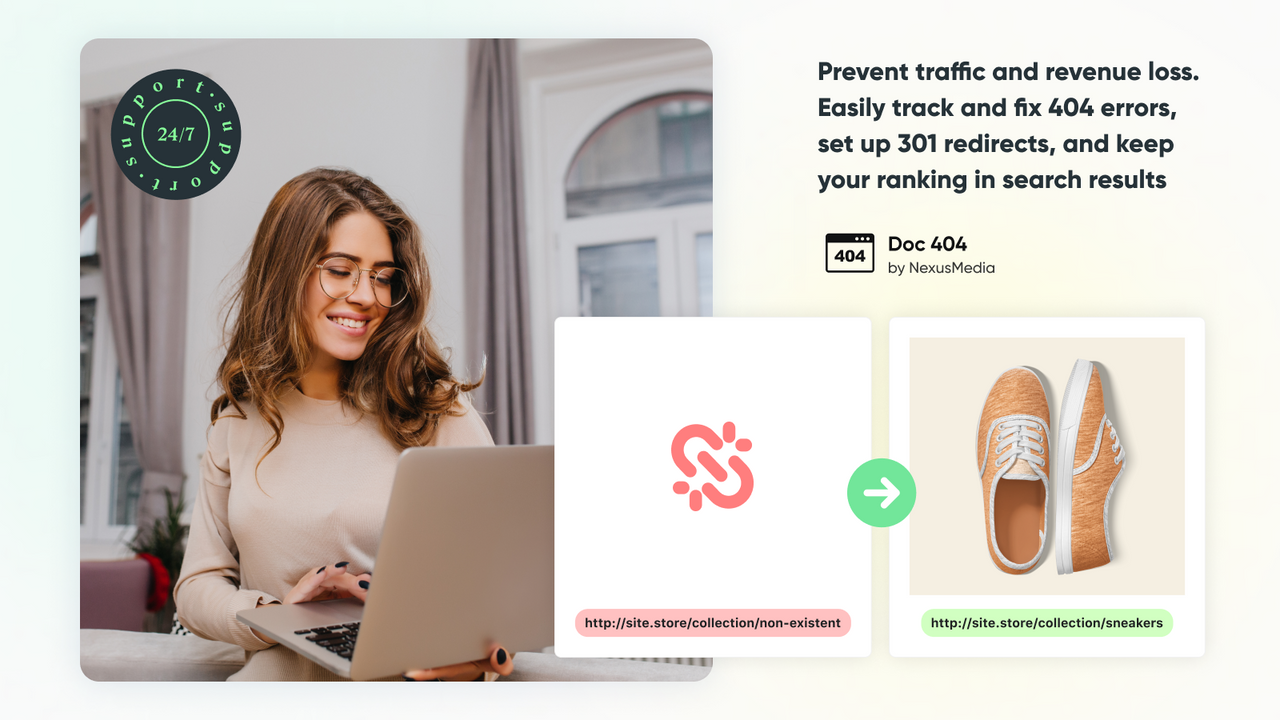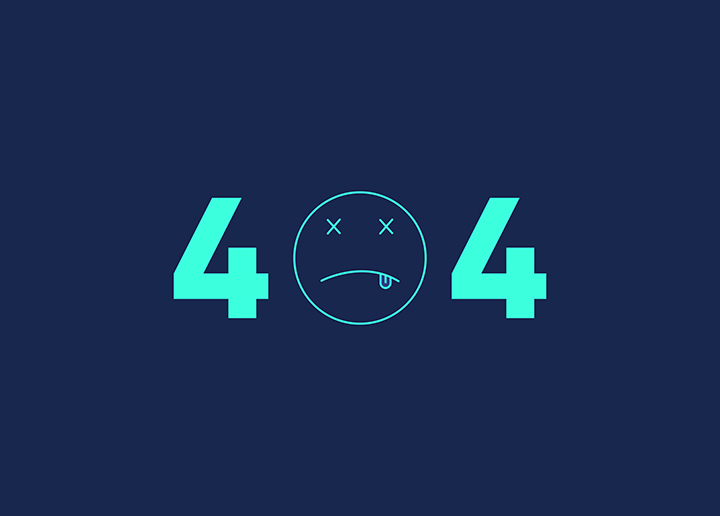Broken links and 404 errors can harm your website's performance. They frustrate visitors and impact your SEO ranking.
Fixing these issues is crucial for maintaining a smooth user experience and keeping your site optimized for search engines. A broken link occurs when a URL leads to a non-existent page. Visitors encountering a 404 error feel annoyed and may leave your site.
This not only reduces user engagement but also decreases your website's credibility. Redirecting broken links to relevant pages ensures visitors find the content they seek. This keeps them on your site longer and improves their overall experience.
In this guide, we will explore methods to identify and fix broken links and properly set up 404 error redirects.
Let's ensure your website remains user-friendly and SEO-friendly.

Credit: apps.shopify.com
Introduction To Broken Links
Broken links are links that do not work. They may lead to a page that does not exist. This can happen for many reasons. The page might have been moved. The URL may have been typed wrong. Sometimes, the page is deleted. Broken links can frustrate visitors. They may leave your site and never come back.
Broken links can hurt your SEO. Search engines like Google do not like broken links. They may rank your site lower. This means fewer people will find your site. Fixing broken links can help your site perform better. It can make your site easier to use. This can lead to more visitors and better SEO.
Identifying 404 Errors
Finding 404 errors is crucial for website health. Fixing broken links and redirecting 404 errors improves user experience and boosts SEO. Regular checks ensure smooth navigation and better site performance.
Common Causes
Broken links often lead to 404 errors. These errors happen when a page is deleted, moved, or the URL is typed wrong. Incorrect links in navigation menus can also cause 404 errors. Sometimes external links change or are removed.
Another common cause is changing the website structure without updating links. Always check for typos in URLs. Avoid broken links by regularly reviewing and updating your site.
Tools For Detection
Use online tools to find broken links. Google Search Console helps detect 404 errors. Broken Link Checker scans your site for issues. Screaming Frog is another useful tool. It crawls your site and reports broken links. These tools are user-friendly.
Regular checks can prevent negative impacts on user experience. Fixing broken links improves SEO and keeps visitors happy. Use these tools to maintain a healthy website.
Effects On User Experience
Broken links can cause user frustration. Users feel annoyed when they can't find what they need. They might leave your site quickly. This increases bounce rates. It can also damage your site's reputation. Users might not return.
404 errors lead to navigation issues. Users struggle to move through your site. This disrupts their experience. They may get lost or confused. Easy navigation is key for a good user experience. Fixing these errors helps users find what they need.
Seo Implications
Fixing broken links and 404 errors improves user experience and search engine rankings. It also reduces bounce rates and increases site credibility. Redirecting helps retain valuable traffic and enhances site navigation.
Search Engine Crawling
Broken links and 404 errors hurt search engine crawling. Search engines like Google find it hard to index pages with broken links. This leads to missed pages. Important pages stay hidden. Broken links confuse search engine crawlers. Crawlers may skip your site.
Ranking Penalties
Broken links and 404 errors lead to ranking penalties. Search engines lower your site's rank. This means fewer visitors. Fewer visitors result in less traffic. Less traffic means less money. Fixing broken links helps keep your rank high. This also helps your site stay strong.
Methods To Fix Broken Links
Check all the links on your site. Go through each page and click on every link. This helps to find broken links. Fix or remove the broken links. It is important for good user experience. Manual checks can be time-consuming but are thorough.
Use tools to find broken links quickly. Tools like Google Search Console and Broken Link Checker can help. These tools scan your site and show all broken links. Automated tools save time. They ensure you do not miss any broken links.

Credit: seahawkmedia.com
Implementing Redirects
Using 301 redirects is best for permanent changes. It tells search engines the page has moved. This helps keep your site’s SEO ranking intact. Use 302 redirects for temporary changes. This tells search engines the page will be back. Choose wisely between these two.
Always check for broken links. Fix them quickly. Use tools to find broken links. Redirect old URLs to new ones. Keep your site clean. Do not ignore errors. Update regularly. Use a redirect manager plugin. Monitor changes. Make sure your redirects work well. Follow these tips.
Monitoring And Maintenance
Performing regular audits on your website is vital. This helps you find broken links and 404 errors. Use tools like Google Search Console. These tools can find errors quickly. Fixing these issues improves user experience. It also helps with SEO.
Always check and update links on your website. Make sure all links work. Update old links to new ones. This prevents users from facing 404 errors. Broken links can hurt your site's SEO. Regular checks can help keep your site healthy.
Tools And Resources
Use Google Search Console to find broken links. It is free. Screaming Frog is good for big websites. It scans all pages. Ahrefs also finds broken links. It has many features.
Redirection is a popular plugin for fixing 404 errors. It helps redirect broken links. Another good plugin is Yoast SEO. It helps with SEO and fixes 404 errors. Broken Link Checker plugin checks for broken links. It reports them and helps fix them.

Credit: www.liquidblox.com
Frequently Asked Questions
How To Fix 404 Redirects?
To fix 404 redirects, update or remove broken links. Implement proper 301 redirects to relevant pages. Check server configuration and ensure correct URLs. Use tools like Google Search Console for monitoring.
How To Fix 404 Broken Links?
Fix 404 broken links by identifying them using tools like Google Search Console. Update or remove the broken links. Redirect them to relevant pages using 301 redirects. Ensure all internal and external links are accurate. Regularly audit your website for new broken links.
How Do I Fix A Broken Redirect?
To fix a broken redirect, update the URL in the. htaccess file or redirect settings. Ensure the destination URL is correct. Test the redirect to confirm it works.
Conclusion
Fixing broken links and 404 errors is crucial for your website's health. It improves user experience and boosts search rankings. Regularly check for broken links to keep your site in top shape. Use reliable tools for detecting and fixing errors.
Redirect old pages to relevant new ones. This helps retain visitors and improves SEO. Stay proactive to maintain a smooth and user-friendly website. Your audience will appreciate the effort, and search engines will reward you. Happy linking!